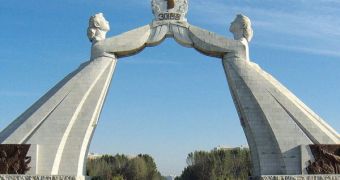The North Korean Space Technology Agency (STA) has recently announced that it plans to test-fire a missile, which is allegedly designed to carry a satellite into orbit. But, in the past, this was Pyongyang's way of justifying testing long-range ballistic missiles. The US, Japan and South Korea are highly concerned about the communist regime's latest ambition, and caution North Korean leaders not to test-fire the rocket, as that would be, in US Secretary of State Hillary Rodham Clinton's own words, “very unhelpful.”
If the fears put forth by the US are founded, then North Korea could be on the verge of developing a long-range ballistic missile, capable of reaching continental North America and such cities as San Francisco and Los Angeles. And even though communist authorities say that they want to put a satellite into orbit, and that it's the country's right to develop a space program, in 1998 they used the same excuse to fire a Taepodong-1 ballistic missile over Japan, claiming afterwards that a satellite had been delivered into orbit. Observatories failed to confirm this fact, and suspicions over Pyongyang's intentions grew.
“The preparations for launching experimental communications satellite Kwangmyongsong-2 by means of delivery rocket Unha-2 are now making brisk headway,” the STA statement says. It does not elaborate on the launch date, or on other technical details, adding just that the rocket will take off from a launch site in Hwadae, in the northeastern part of the country.
According to intelligence reports, there is a great deal of human and motorized activity at the Hwadae launch site, but no missile has yet been placed on the launch pad. Even after it's in position, it would take technicians 5 to 7 days to completely fill the rocket with the fuel it needs for its long travel. Needless to say, all intelligence agencies in the world with satellite access currently have their eyes on the region, attempting to identify what type of device the Koreans will blast off as soon as possible.
The only point of calling this missile a satellite launch mission is to “to minimize friction with the United States and international criticism,” Korea Institute for Defense Analyses investigator Baek Seung-joo, who is an expert on North Korea-related issues, maintains. The atmosphere remains tense, as the US, Japan and South Korea attempt to silence the North Korean regime and deter it from the test fire.

 14 DAY TRIAL //
14 DAY TRIAL //